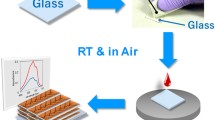Abstract
Orientation of polymers enhances many of their properties, particularly the mechanical, impact, barrier and optical properties. Biaxial orientation has the added advantage of allowing this enhancement in two directions, avoiding any weakness in the transverse direction. Biaxial orientation is particularly important in films, where it allows the production of thinner films having superior mechanical, optical and barrier properties and, if required, the ability to shrink when reheated. For example, shrink and barrier properties are particularly important in meat packaging, whereas good mechanical and optical properties and no shrinkage are desired in box overwrap applications of tape cassettes and CDs.
Access this chapter
Tax calculation will be finalised at checkout
Purchases are for personal use only
Preview
Unable to display preview. Download preview PDF.
Similar content being viewed by others
References
Beer G. (1996) Polypropylene, Kunststoffe Plast. Europe, 86, 14–16.
White, J.L. and Cakmak, M. (1988) Orientation, crystallization and haze development in tubular film extrusion, Adv. Polymer Technol., 8, 27–61, and (1990) Orientation, in Encyclopedia of Polymer Science and Technology, (eds F.M. Herman, N.G. Gaylord and N.M. Bikales), Wiley, New York.
Nordmeier, K. and Menges, G. (1986) The influence of processing conditions on the optical and mechanical properties of extruded and biaxially stretched PP films. Adv. Polymer Technol., 6, 59–64.
Jabarin, S.A. (1993) Orientation and properties of polypropylene. J. Reinforced Plastics Composites, 12, 480–488.
Karacan, I., Taraiya, A.K., Bower, D.I. and Ward, I.M. (1993) Characterization of orientation of one-way and two-way drawn isotactic polypropylene films, Polymer, 34, 2691–2701.
Editor information
Editors and Affiliations
Rights and permissions
Copyright information
© 1999 Springer Science+Business Media Dordrecht
About this chapter
Cite this chapter
Ajji, A., Dumoulin, M.M. (1999). Biaxially oriented polypropylene (BOPP) processes. In: Karger-Kocsis, J. (eds) Polypropylene. Polymer Science and Technology Series, vol 2. Springer, Dordrecht. https://doi.org/10.1007/978-94-011-4421-6_9
Download citation
DOI: https://doi.org/10.1007/978-94-011-4421-6_9
Publisher Name: Springer, Dordrecht
Print ISBN: 978-94-010-5899-5
Online ISBN: 978-94-011-4421-6
eBook Packages: Springer Book Archive




